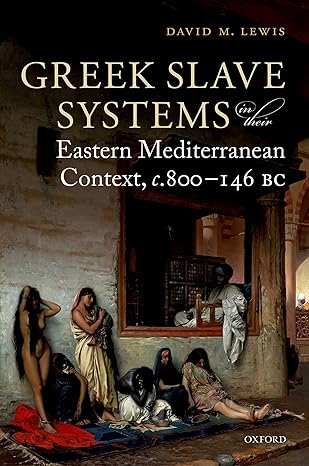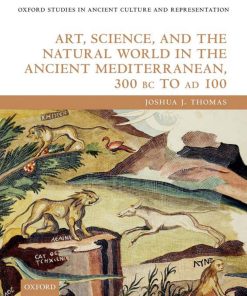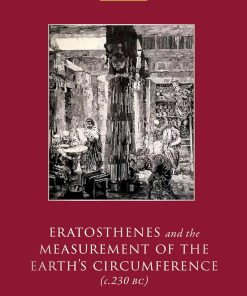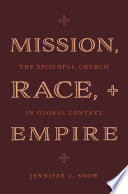Greek Slave Systems in their Eastern Mediterranean Context, c.800–146 BC David M. Lewis 9780191082627 0191082627
$50.00 Original price was: $50.00.$25.00Current price is: $25.00.
Greek Slave Systems in their Eastern Mediterranean Context, c.800–146 BC David M. Lewis – Ebook Instant Download/Delivery ISBN(s): 9780198769941,0198769946,9780191082627,0191082627
Product details:
- ISBN 10: 0191082627
- ISBN 13: 9780191082627
- Author: David M. Lewis
The orthodox view of slavery in the ancient Mediterranean holds that Greece and Rome were its only ‘genuine slave societies’, that is, societies in which slave labour contributed significantly to the economy and underpinned the wealth of elites. Other societies, traditionally labelled ‘societies with slaves’, are thought to have made little use of slave labour and therefore have been largely ignored in recent scholarship. This volume presents a radically different view of the ancient Eastern Mediterranean world, showing that elite exploitation of slave labour in Greece and the Near East shared some fundamental similarities, although the degree of elite dependence on slaves varied from region to region. Whilst slavery was indeed particularly highly developed in Greece and Rome, it was also economically entrenched in Carthage, and played a not insignificant role in the affairs of elites in Israel, Assyria, Babylonia, and Persia. The differing degrees to which Eastern Mediterranean elites exploited slave labour represents the outcome of a complex interplay between cultural, economic, political, geographical, and demographic factors.Proceeding on a regional basis, this book tracks the ways in which local conditions shaped a wide variety of Greek and Near Eastern slave systems, and how the legal architecture of slavery in individual regions was altered and adapted to accommodate these needs. The result is a nuanced exploration of the economic underpinnings of Greek elite culture that sets its reliance on slavery within a broader historical context and sheds light on the complex circumstances from which it emerged.
Table contents:
Part I: Prolegomena
1. Ownership and the Articulation of Slave Status in Greek and Near Eastern Legal Practice
I. Five Popular Misconceptions about Property
II. Property and Slavery in Antiquity: A Pragmatic Approach
III. The Pragmatic Approach: Two Test Cases
Conclusions
2. The Riddle of Freedom
I. Emic and Etic Categories
II. Polysemy and Context
III. Concepts in Context: Freedom and Slavery in the Athenian Courtroom
IV. Freedom and Manumission
V. The ‘Spectrum’ Approach to Dependent Labour in Ancient Greece
VI. A Revised Approach
3. Status Distinctions in Greece and the Ancient Near East
I. Hierarchies of Status
II. Legal and Extralegal Usages of Slave Terminology
III. Status Distinctions in Action: Two Babylonian Court Cases
IV. ‘The Advance, Hand in Hand, of Freedom and Slavery’
4. Slave Societies, Societies with Slaves: Capturing the Relative Importance of Slavery to Ancient Economies
I. Approaches to Defining ‘Slave Society’
II. The Myth of Five Slave Societies
III. Slave Society and Historical Myopia
IV. Working at Cross-Purposes: Comparative Approaches to Classical and Near Eastern Slavery
Part II: Epichoric Slave Systems of the Greek World
5. The Archaic Greek World
I. Methodological Considerations
II. Status and Slave–Master Relations
III. Slavery and the Economy: Odysseus’ Estate
IV. Hesiod’s Works and Days: Slavery inSub-Elite Agriculture
V. Economic Structures
VI. Late Archaic Developments
6. Helotic Slavery in Classical Sparta
I. Legal Status
II. Helot Economy and Slave Society at Sparta
III. What is Helotic Slavery?
7. Classical Crete
I. The Literary Sources
II. Gortyn: Terminology for Slaves
III. Slave Status and Slave Ownership at Gortyn
IV. Slavery in the Economy of Gortyn and Classical Crete
V. Management
VI. Family Life
VII. Residential Patterns
VIII. Public Land and the andreia
IX. Slave Society at Gortyn and Across Crete
8. Classical Attica
I. Patterns of Slave Ownership among the Citizenry
II. Slavery and the Liturgical Class
III. Sub-Elite Slave Ownership at Athens
Part III: Slave Systems of the Wider Eastern Mediterranean World
9. Iron Age II Israel
I. The Study of Slavery in Ancient Israel
II. Terminology for Slavery
III. The So-Called ‘Slave Laws’ of the Torah
IV. Slavery in the Economy of Iron Age II Israel
V. Conclusions
10. Assyria: The Eighth–Seventh Centuries bc
I. Slave Status in Assyria
II. Elite Slaveholdings and the Location of Slave Ownership
III. Labour in the Assyrian Countryside
11. Babylonia: The Seventh–Fifth Centuries bc
I. Sources and Scholarship
II. The Location of Slave Ownership in Neo-Babylonian Society
III. Three Thumbnail Sketches
IV. The Uses of Slaves
V. Conclusions
12. The Persian Empire
I. Anatolia
II. Egypt
III. Fars
13. Punic Carthage
I. Slave Status in Carthage
II. Slavery in the Punic Economy
Part IV: Why Slavery?
14. Differentials in the Magnitude of Slaveholding: Towards an Understanding of Regional Variation
I. Choosing a Labour Force
II. Political and Economic Geography
III. The Dynamic Forces of the Aegean Slave Trade
IV. The Effect of Slave Trading on Supplier Zones
V. Beyond the Greek World
People also search:
history of slavery in eastern europe
the slave systems of greek and roman antiquity
greek slave systems
a greek slave
a greek-like blended culture is also called sparta
You may also like…
Business & Economics - Industries
History - Ancient History
Religion & Spirituality - Religious Conflict
In Their Own Words: Understanding Lashkar-E-Tayyaba 1st Edition
History - Ancient History
Art, Science, and the Natural World in the Ancient Mediterranean, 300 BC to AD 100 1st Edition
Politics & Philosophy - European & American Philosophy
Perspectives on the Philosophy of David K. Lewis by Helen Beebee
Earth Sciences - Geography
Eratosthenes and the Measurement of the Earth’s Circumference (c.230 BC) Christopher Matthew
Uncategorized
History - Ancient History
Religion & Spirituality - Other Religions












